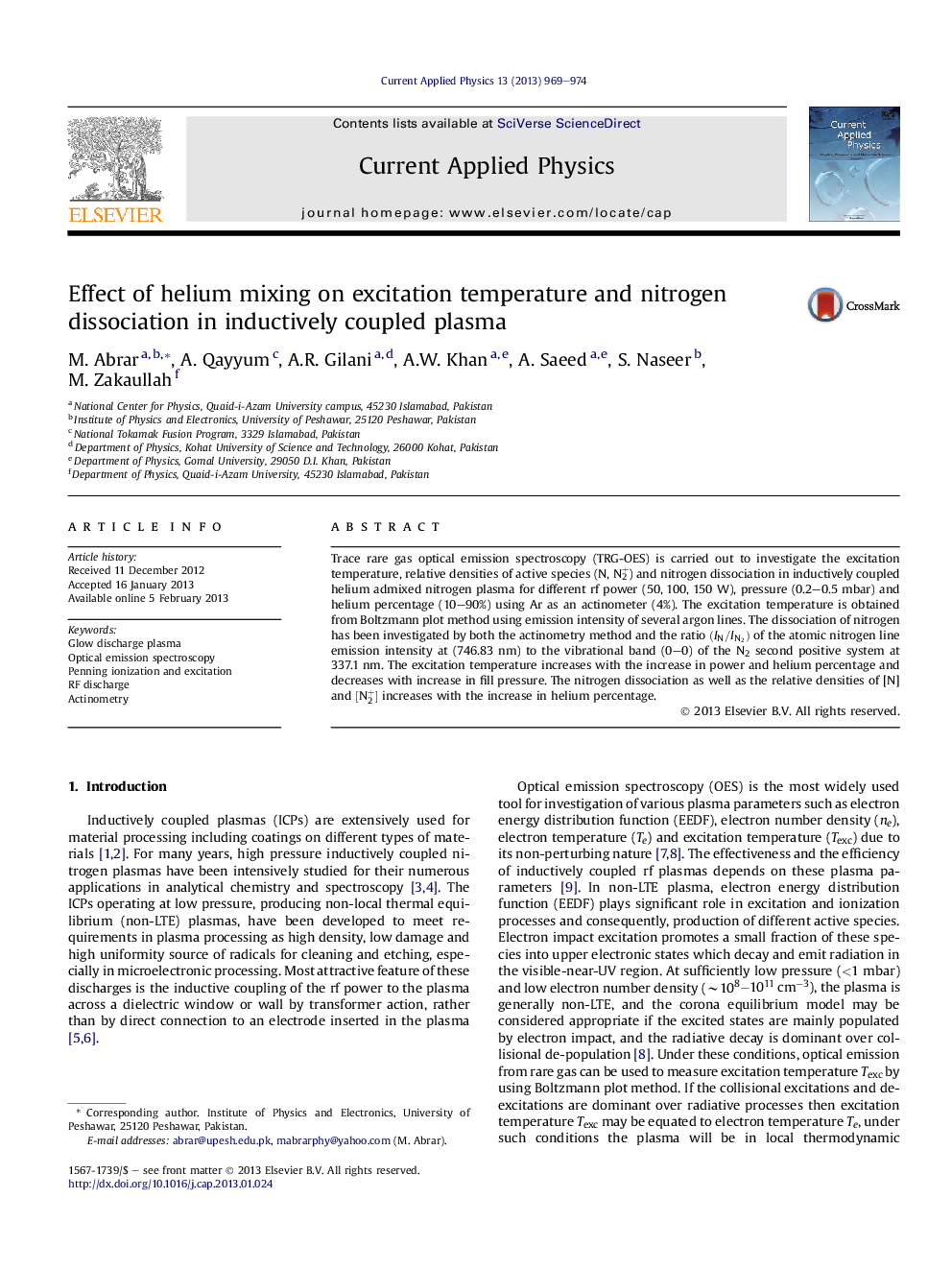| Article ID | Journal | Published Year | Pages | File Type |
|---|---|---|---|---|
| 1786378 | Current Applied Physics | 2013 | 6 Pages |
Trace rare gas optical emission spectroscopy (TRG-OES) is carried out to investigate the excitation temperature, relative densities of active species (N, N2+) and nitrogen dissociation in inductively coupled helium admixed nitrogen plasma for different rf power (50, 100, 150 W), pressure (0.2–0.5 mbar) and helium percentage (10–90%) using Ar as an actinometer (4%). The excitation temperature is obtained from Boltzmann plot method using emission intensity of several argon lines. The dissociation of nitrogen has been investigated by both the actinometry method and the ratio (IN/IN2)(IN/IN2) of the atomic nitrogen line emission intensity at (746.83 nm) to the vibrational band (0–0) of the N2 second positive system at 337.1 nm. The excitation temperature increases with the increase in power and helium percentage and decreases with increase in fill pressure. The nitrogen dissociation as well as the relative densities of [N] and [N2+] increases with the increase in helium percentage.
► Optical emission spectroscopy of inductively coupled plasma. ► Enhancement of nitrogen active species by He mixing. ► Effect of He mixing on excitation temperature. ► Nitrogen dissociation measurement by optical actinometry.
